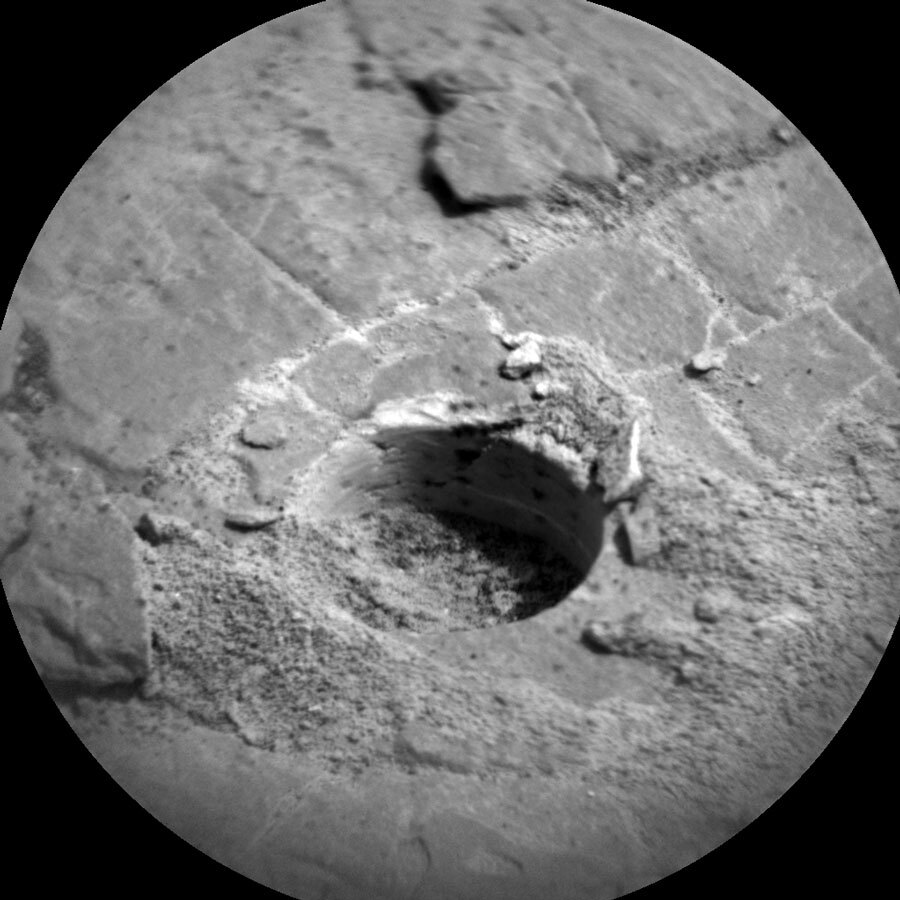2 min read

Over this weekend, Curiosity will focus on wrapping up the sequence of drill-related activities at the “Mary Anning” target while the team considers if we want to drill a second location here. On sol 2853, APXS will make a long overnight observation of the drill tailings, giving us a detailed look at the chemical composition of this rock. The next day on sol 2854, CheMin will have its turn at a long overnight measurement to determine the mineralogy of Mary Anning.
ChemCam will also make a passive observation of the sample dump pile, adding to our rich collection of remote sensing observations characterizing: the pre-drilled surface, the drill hole and drill tailings, and now the dump pile. The extensive documentation that we do in all drill campaigns, involving both arm and mast instruments to study the drill hole and surrounding environment, goes a long way in helping scientists understand the history of these rocks and how they formed.
Other activities in this plan chipped away at the long list of desired observations we’ve accumulated while parked at this drill site. We planned additional Mastcam imaging to extend coverage of our workspace, and for change detection as we are now in the windy season at Gale crater – for example, compare the drilled powder in the sol 2852 image above to the same view on sol 2839! ChemCam will also do long distance imaging to get a higher resolution look at some of the upcoming terrains in the fractured intermediate unit. Atmospheric observations abound throughout the plan, with a comprehensive collection of: Mastcam and Navcam measurements of the atmospheric dustiness above us and across the crater, ChemCam ‘passive sky’ measurements (from which we can retrieve trace gas amounts and dust and water ice amounts and properties), Navcam imaging looking for dust devil vortices all around us, and early morning ‘zenith’ and ‘suprahorizon’ movies looking for clouds, and background REMS and DAN measurements. Whew, what a list! As always there will be plenty of data for us scientists to study from this drill site!
Written by Vivian Sun, Planetary Geologist at NASA's Jet Propulsion Laboratory







